Reforestation is the process of restoring the earth’s environment after a human-caused or natural ecological danger by planting or assisting vegetation growth, it’s most associated with trying to help regenerate the Amazon rainforest and areas affected by severe forest fires. Successful reforestation is the outcome of multi-actor collaboration and strives to revive a versatile rainforest focused on heterogeneity. The various plant species included in reforestation offer essential ecosystem benefits for all life forms, especially humans.
Maintaining and enhancing habitats and counteracting global warming are considered the optimum ecological options against devastation. Our forests supply raw materials for woodwork production and are instrumental for several other industries. Thus, they should be preserved. Reforestation is vital for reasons other than supporting commercial demands. Just to be clear, this isn’t a direct concern for Maine and New Hampshire forests. We benefit from a climate in which natural regeneration and responsible forestry with regeneration planning is the norm.
Instead of focusing on Maine and New Hampshire forests as we usually do, this blog will discuss the importance of reforestation where it’s needed and clarify the differences between active reforestation and passive regeneration, which is how we approach the restoration of timberlands with great success in New England.
Take a look at this guide to learn about the process of reforestation and understand how it can help humankind.
Understanding the Concept of Reforestation
 Reforestation is the act of replanting trees in a degraded forest area. It’s critical to restore and maintain forest areas since agroforestry is a significant source of carbon sequestration.
Reforestation is the act of replanting trees in a degraded forest area. It’s critical to restore and maintain forest areas since agroforestry is a significant source of carbon sequestration.
Forest trees can be damaged in a variety of ways. Forests are frequently threatened by changing weather patterns that may lead to wildfires. Deforestation is also caused by human activities such as chopping wood, plowing land for farming purposes, and industrialization.
Whether deforestation is caused by economic actions or environmental disasters, it’s critical to reviving a forest’s health. Forests are among the habitats that accumulate atmospheric carbon and play an important role in the atmosphere’s ecological system.
Forests merely absorb 1/3rd of the CO2 released by non-renewable energy sources. Furthermore, the agricultural sector produces greenhouse gases by accounting for 25% of carbon dioxide emissions. Deforestation activity is accountable for 50% of these toxins. Deforestation produces a significant quantity of greenhouse gases while also diminishing Earth’s inherent rejuvenation capabilities.
Amid the environmental downturn, deforestation is a big problem. Fortunately, forestry restoration is an excellent anthropogenic global warming answer. A research study conducted at a Swiss university concluded that it’s our only option for combating rising global temperature changes and CO2 concentration.
There are two types of reforestation. Active restoration involves using supervisory strategies like direct seeding or saplings, whereas passive restoration involves taking no action other than ceasing ecological stressors like agribusiness or herding.
Understanding the Importance of Reforestation
15 billion trees are taken down annually. This contributes to the environmental impacts that are causing severe climate changes. If global deforestation continues, the world’s trees may become largely depleted in a matter of centuries, thanks to the added pressure of climate change. In Maine and New Hampshire, our forests are healthy and strong and do a lot to absorb carbon from the atmosphere, but our responsible forestry practices are, unfortunately, not universal.
The purpose of trees explains the significance of reforestation. Growing woodlands help avoid land degradation and desertification while also providing wind protection for homes and farmlands. The coastal environment is strengthened and protected by trees along riverbeds and sandy beaches. Forests are also natural ecosystems for rare and endangered creatures. As a result, it’s critical to not only restore deteriorated or devastated lands but also to grow new trees to replenish the forest area.
Reforestation is also used to recover woodlands that have been damaged by natural disasters such as fires, storms, and landslides. This method is also used to rehabilitate forests that have been damaged by man-made interventions such as logging, the discoveries of archaeological sites, or urbanization. As a result, reforestation is a way to counteract land clearing and reduce pollution.
Benefits of Reforestation
The following is a list of advantages of reforestation:
1. Hydrologic Improvement
By reducing topsoil erosion, the land provides for more rainwater infiltration and retention, lowering surface outflow and silt transport. Trees can absorb and deflect rainfall, limiting inputs to waterways even more, and they can absorb chemicals and compounds that are harmful to groundwater resources.
2. Economy
Traditionally, forests have been valuable economic resources. The paper industry is reliant on tree-sourced wood fibers. Ambling became the primary source of income for individuals residing in the forested regions. When lands are managed effectively and seedlings are sown consistently, woodlands are renewable solutions for wood products.
They also provide jobs for locals who collect forest items and transform them into handicrafts.
3. Cleaner Air
Another advantage of reforestation is that trees consume carbon dioxide and emit oxygen, keeping the equilibrium. As a result, rainforests are renowned as the earth’s natural respiratory systems. The more trees we maintain, the cleaner the oxygen we inhale. Forestry also helps in decreasing sandstorms and improving the air quality.
4. Reversing Habitat Loss
Land degradation is caused by air and water encroachment of bare ground. Reforestation tackles the problem from two angles: tree stems and underbrush vegetation.
Get In Touch With One of the Most Trustworthy Forest Management Companies in Maine
Are you ready to start your forest restoring campaign to help fight against global warming? If you need a reliable, professional forester to assess your woodlot, consider contacting Tall Pines Forest Management. Our forest planning and management company has helped organize and manage many harvest operations and offers a wide range of forestry services like timber resource valuation, forest modeling, consulting on forestry investments, tax management plans, and carbon offsets.
Our experts have assisted in many harvest operations in the US. We aim to satisfy the needs of our clients.
Email us or give us a call today to learn more about our wide range of services, offered exclusively for clients in Maine and New Hampshire.


0 Comments